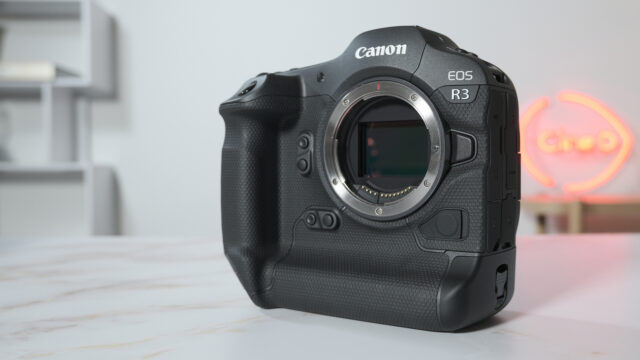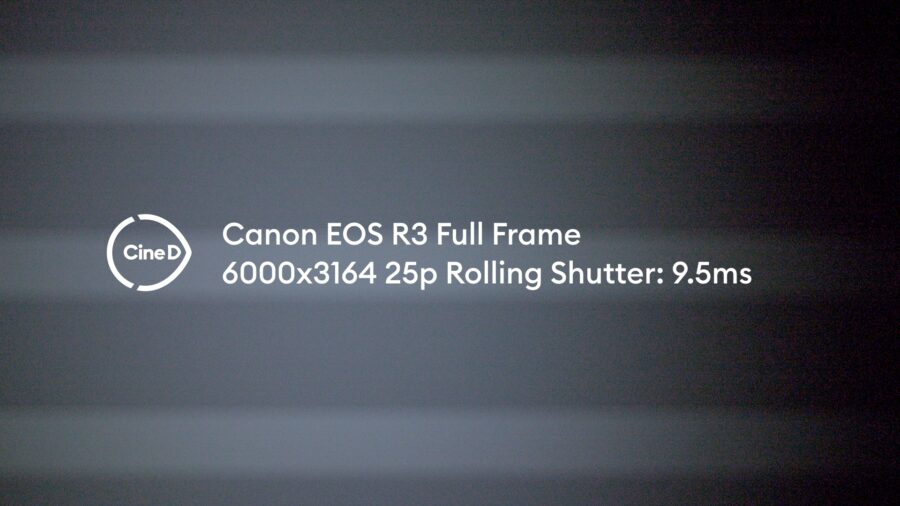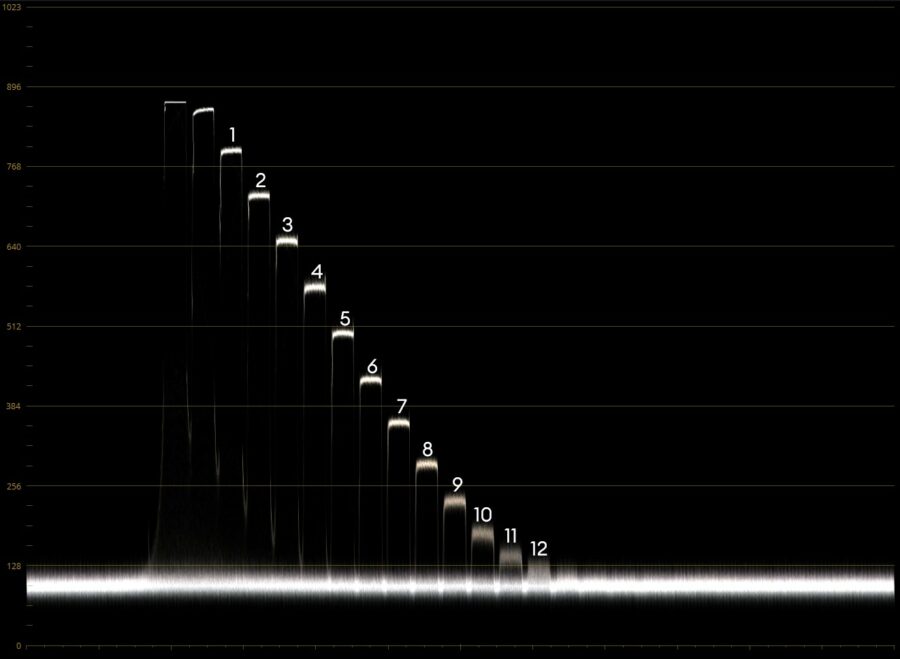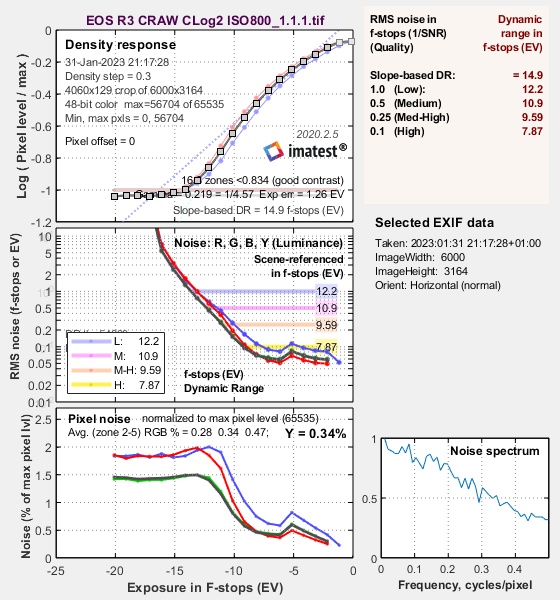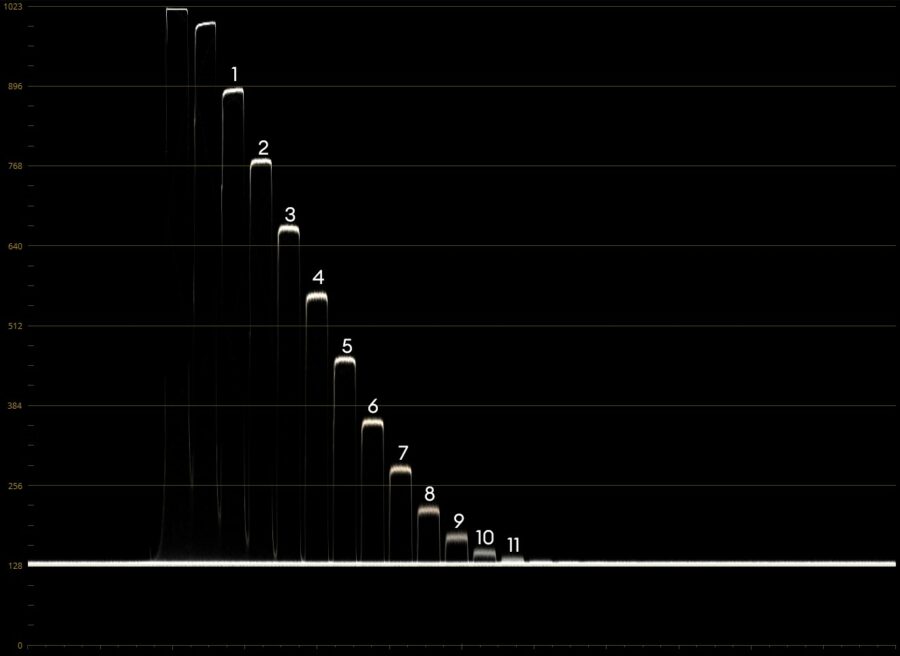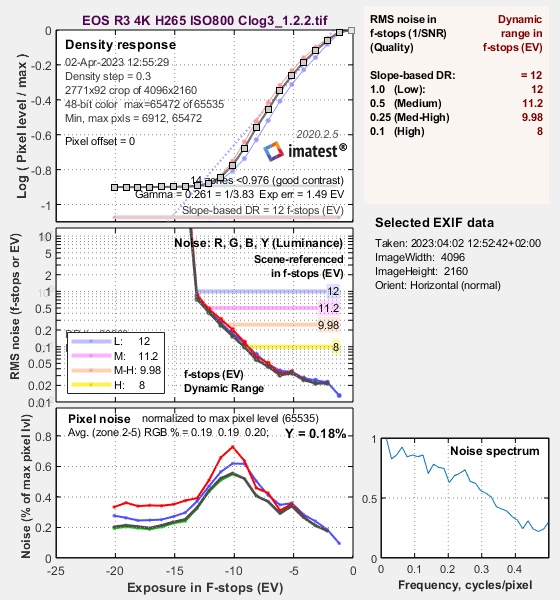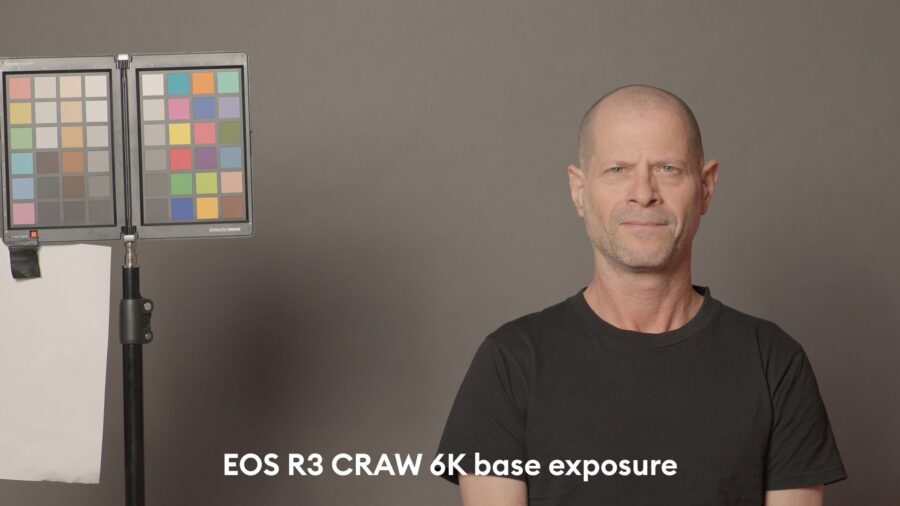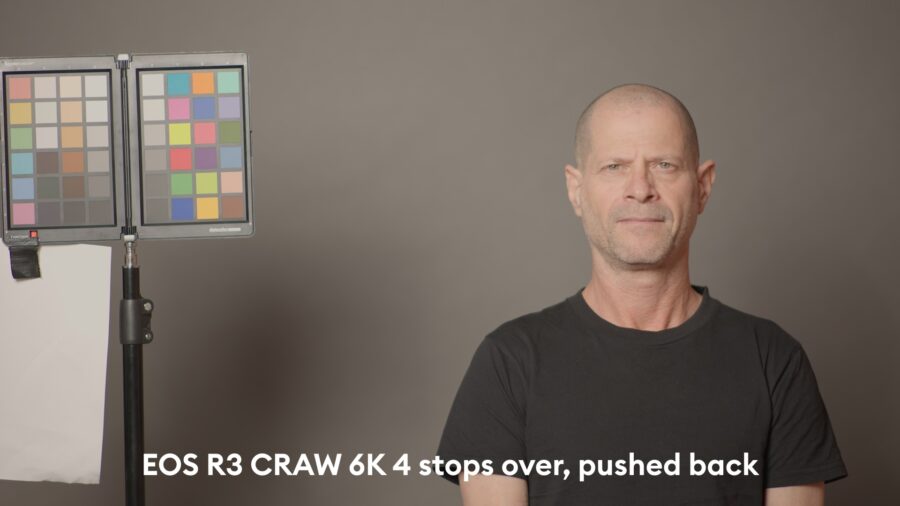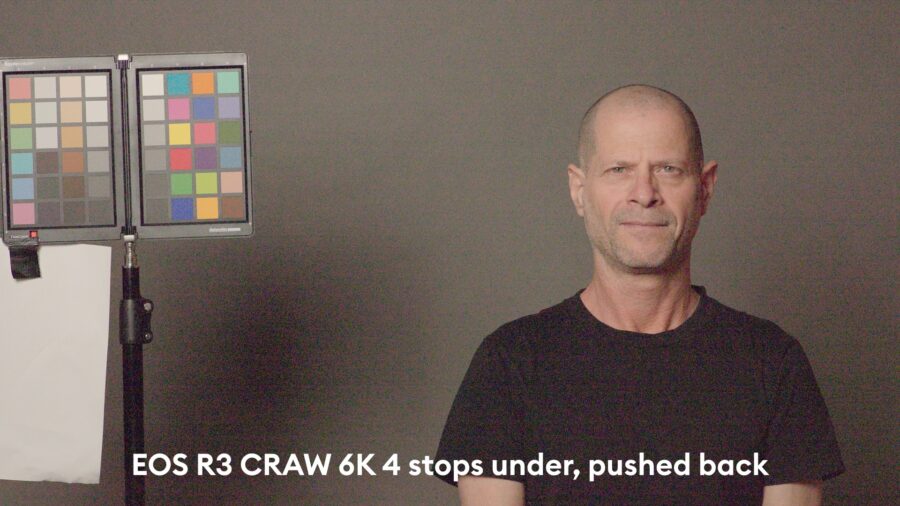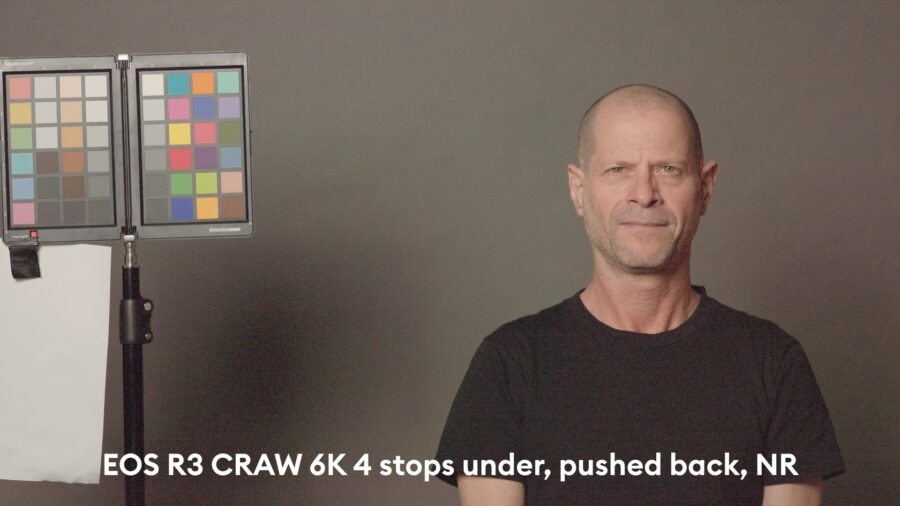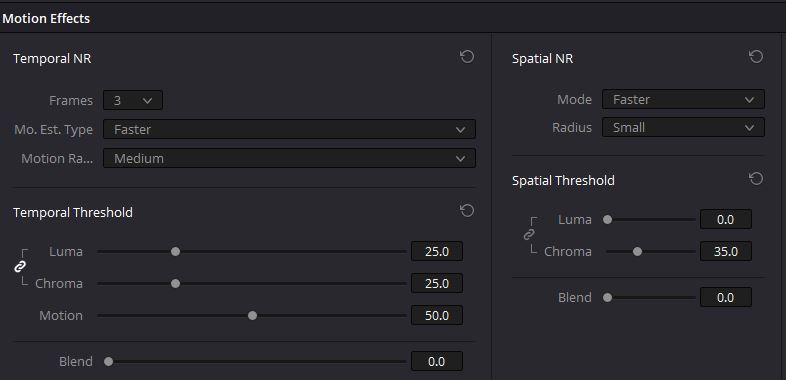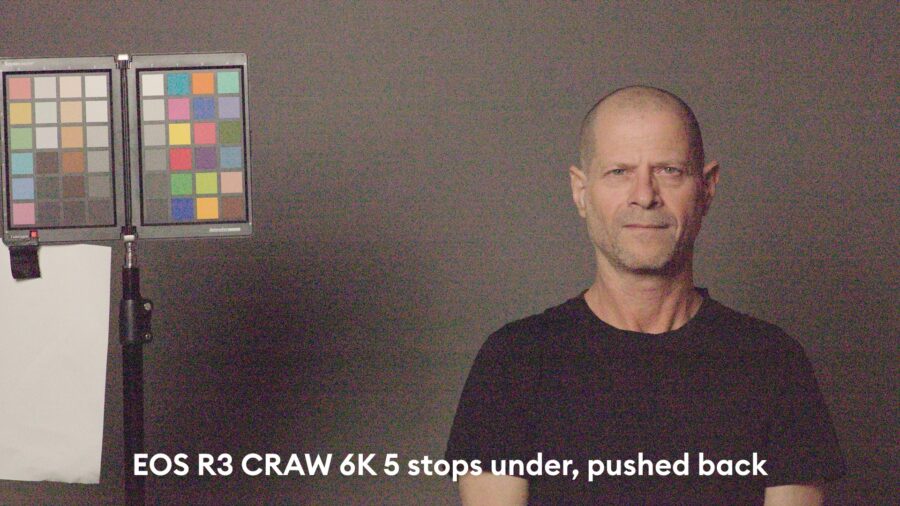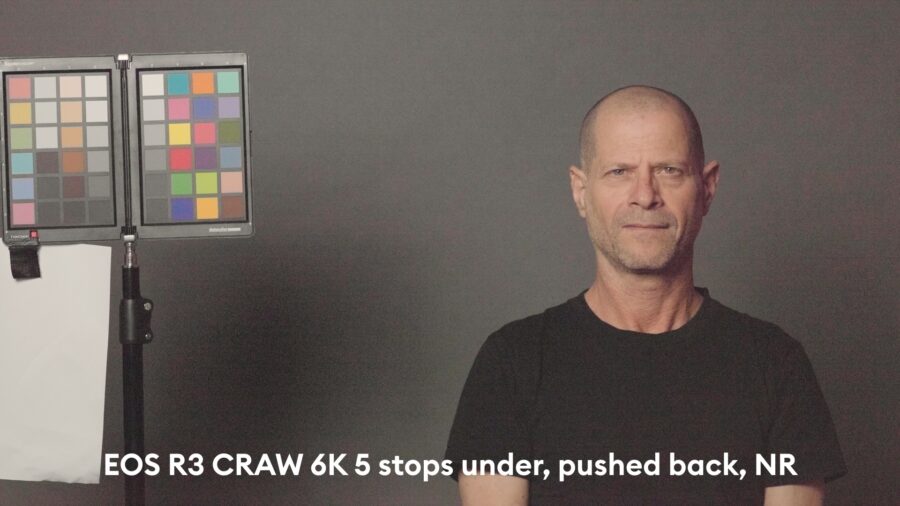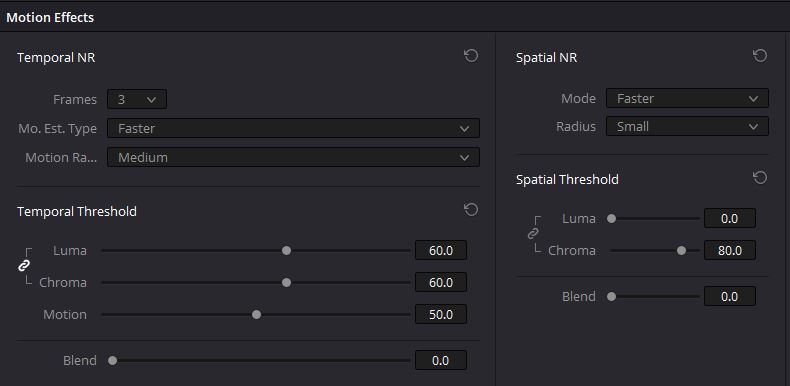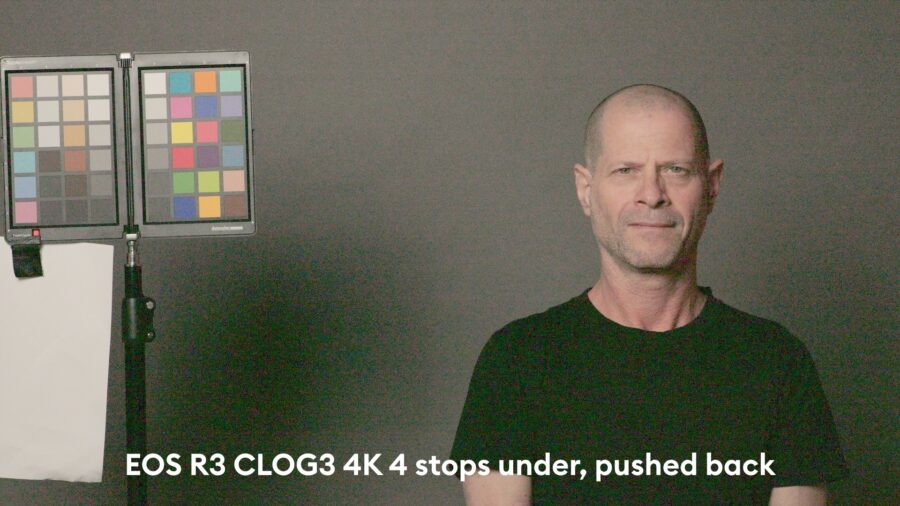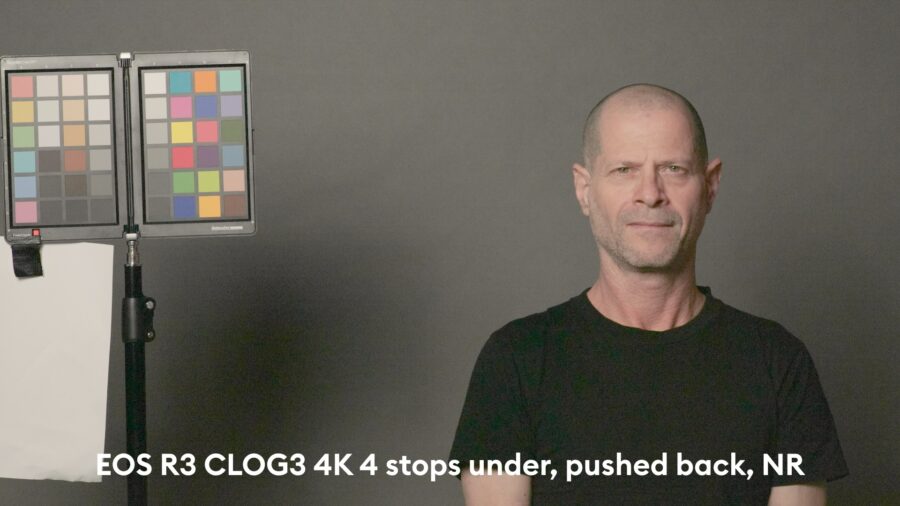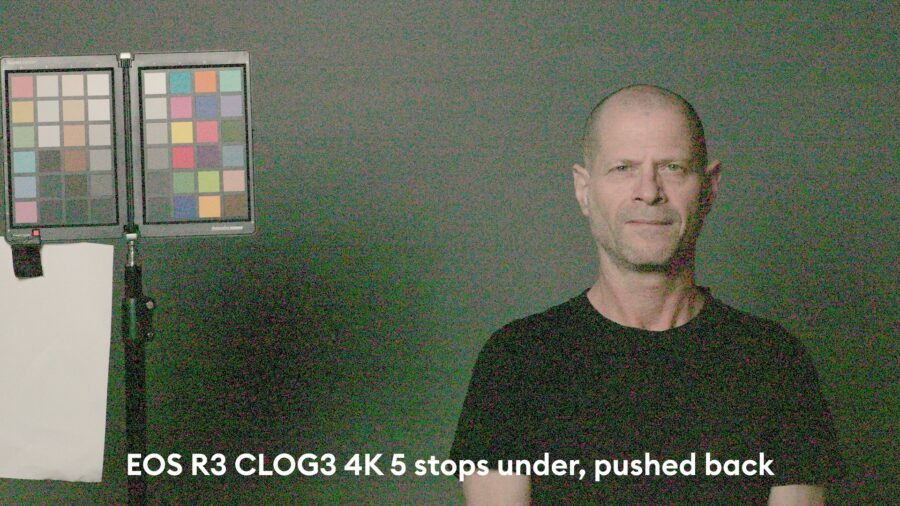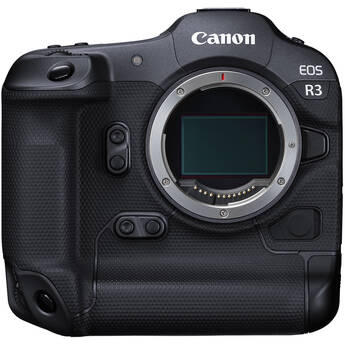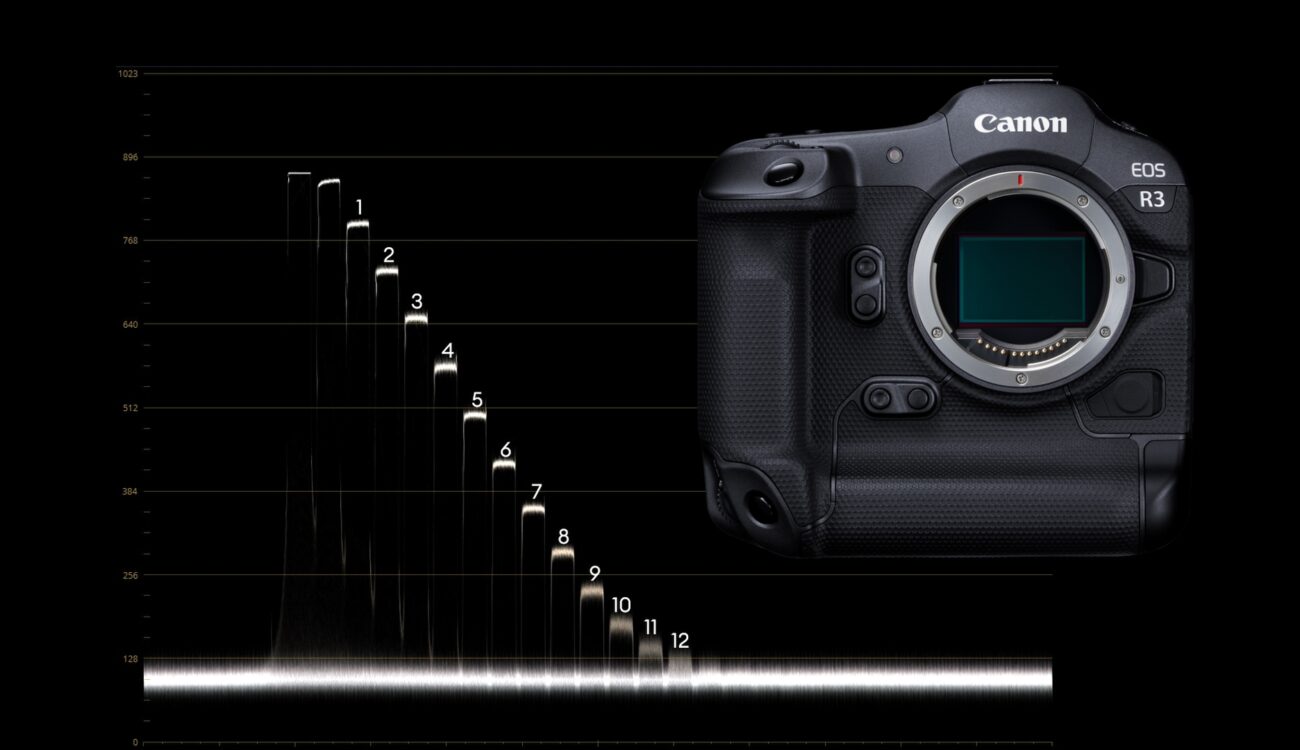
Many readers have asked for it, but there was always something else in the way. Finally, we could get our hands on the Canon EOS R3 to run it through our lab test procedures. Curious to hear more? Then read on …
The Canon EOS R3 was launched in September 2021, but there was a longer waiting period due to all the logistic issues of the pandemic. Hence, this camera was readily available only in the middle of 2022. Please head over here to read about the specs, which include 6K 60p internal recording in CRM RAW or CRM RAW Light formats (plus 4K 120p in MP4).
The Canon EOS R3 features a stacked, backside illuminated 24.1MP full frame sensor, which claims to have a very fast readout speed. Thanks again to my colleague Florian who helped to shoot this test. So, let’s have a look. Camera firmware was 1.2.2
Rolling shutter of the Canon EOS R3
As usual, we used our strobe light to generate the sequence of black and white line pairs. In full frame 6K CRAW mode (which is 17:9, hence 7% less picture height than 16:9), the camera shows a very good 9.5ms (less is better):
Wow, that is really good. The number 1 in terms of full frame rolling shutter in the consumer price bracket so far still is the Sony a7S III which clocked 8.7ms, but the competition is getting closer!
Dynamic range of the Canon EOS R3
If you are not aware of how we test dynamic range, please head over here first.
In DaVinci Resolve (18.1.4), the Canon RAW files can easily be developed to Canon Log 2 (LOG, CLOG3, and Rec709 are the other options) in the RAW camera tab:
Now, starting with 12 bit Cinema RAW in 6K at ISO800 developed to CLOG2, here is the waveform plot of our Xyla21 chart:
As expected, with Canon RAW files, the darker stops are quite noisy and 12 stops can be identified above the noise floor. IMATEST calculates the following:
10.9 stops at signal to noise ratio (SNR) of 2, and 12.2 stops at SNR = 1 are calculated. As can be seen in the middle graph above the blue “12.2” line, about 2 more stops are buried in the noise floor. Those can be excavated in postproduction using advanced noise processing.
If we switch the camera to 4K H265 4:2:2 10bit CLOG3 recording (no CLOG2 option available in-camera) we get the following waveform plot:
About 11 stops can be identified. A very faint 12th stop is visible inside the noise floor – which looks super clean compared to the CRAW file above. A lot of internal noise reduction is going on here.
IMATEST calculates 11.2 stops at SNR = 2, and 12 stops at SNR = 1. Thats it. No additional stops buried in the noise floor (see the middle diagram below, there is nothing above the blue “12” line):
11.2 stops at SNR = 2 for a full frame sensor is on the low end nowadays. Hence, if you want to exploit the full potential of the sensor, you are forced to use CRAW.
Latitude of the Canon EOS R3
As said before, latitude is the capability of a camera to retain detail and colors when over- or underexposed and pushed back to a base exposure. This test is very revealing, as it pushes every camera to its absolute limits – not just in the highlights but also in the shadows.
All latitude shots were done at ISO800 with 6K 12bit Canon RAW developed to CLOG2, but I will also use the 10bit 4K internal H265 recording on some shots to show you some differences.
Our studio base exposure is (arbitrarily) chosen as having an (ungraded) luma value of 60% on the forehead of our subject on the waveform monitor. In this case, my dear colleague Johnnie:
Now, let’s jump to 4 stops of overexposure:
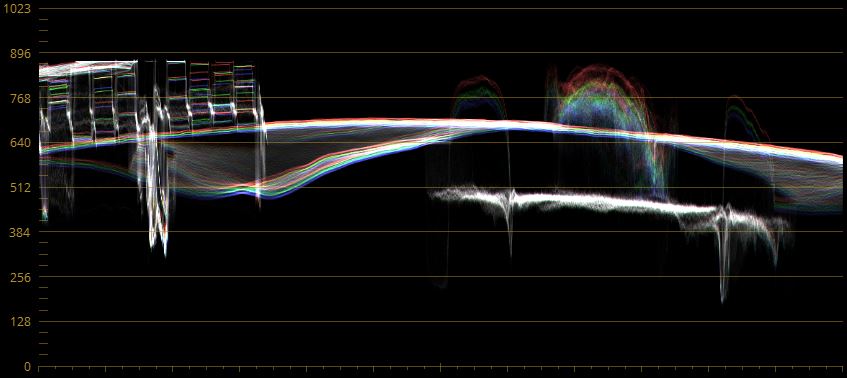
As seen in the ungraded RGB waveform above, the red channel is at the cusp of clipping but fully intact on Johnnie’s forehead. On the left side, some patches of the ColorCheckr are already clipping.
In the Camera RAW tab in DaVinci Resolve, it’s very easy to push the files back to base exposure. Just use the exposure slider and adjust. Unfortunately though, this only works from +4 to -4. Above or below that, the typical lift, gamma and gain controls were used.
Now, let’s start to underexpose by closing down the iris of the lens in one stop increments (until T8-after that the shutter value was halved).
At 3 stops under and pushed back, we see significant noise creeping into the image:
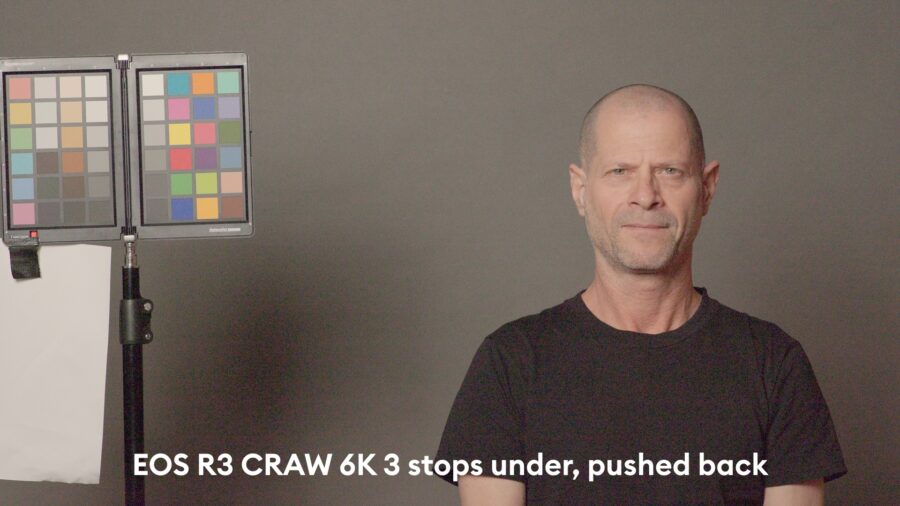
The noise is finely dispersed, and I would not see the need for noise reduction at this stage. We are already at 7 stops exposure latitude (4 over, 3 under).
Now, at 4 stops under, pushed back noise obviously is getting way more severe:
Now you would have to apply quite a lot of noise reduction to save this image (see the values needed in DaVinci Resolve below):
We are at 8 stops of exposure latitude in CRAW. That is state-of-the-art for consumer full frame cameras. Can we push it one stop more? Let’s have a look:
Things are getting super noisy now. Chroma noise is all over the place. Let’s apply some heavy noise reduction:
Unfortunately, noise reduction cannot save this image. Larger pinkish and greenish blotches of chroma noise hover all over the image, and the moving image has a harsh appearance. Game over. However, I do like that the shadow side of Johnnie’s face cleans up rather OK’ish (but with a pinkish cast), and overall the image still looks quite good.
So, that gives us 8 stops of exposure latitude with some room towards 9. A top result!
The current leader of the pack for full frame cameras is the ARRI ALEXA Mini LF with 10 stops of exposure latitude.
In case you are wondering how the 4K H265 10bit image performs, here are some results. You can still go to 4 stops over and push back the image to base exposure. From 4 stops under, however, the image starts to fall apart:
Noise reduction saves it partially, but you get these larger patches of pink and green chroma noise which are very distracting to the eye – have a look at Johnnie’s shirt for example, or on the shadow that is cast by the Colorcheckr:
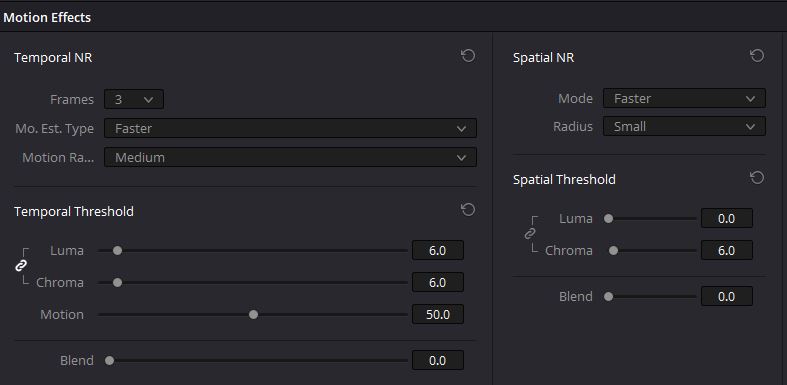
In my opinion, this is overall at the edge of being usable, but comparing it respective to the 6K CRAW file, you can see how much better the 6K RAW file looks, especially in terms of color fidelity.
At 5 stops under, things fall apart completely in 4K H265:
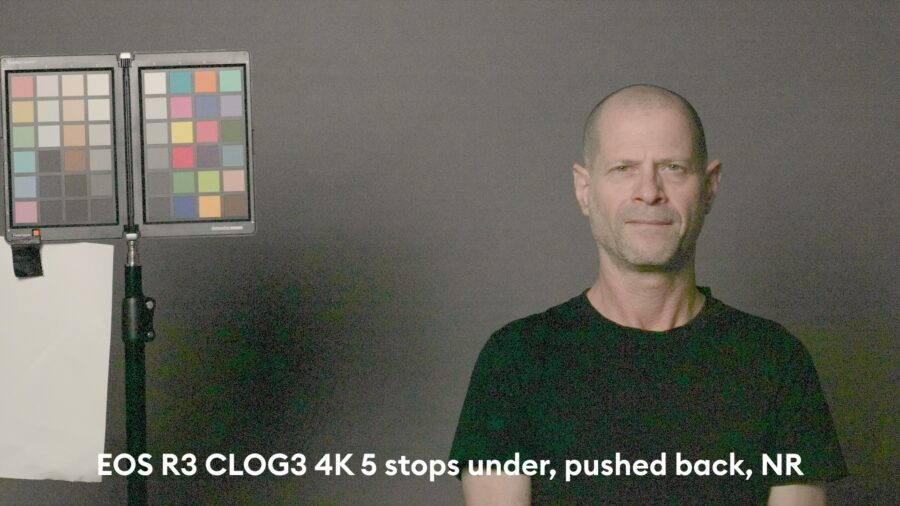
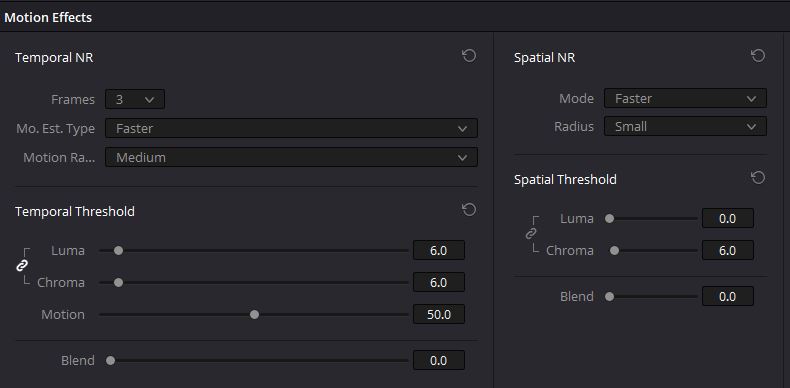
No matter how I tune the noise reduction settings for higher values temporal and spatial, the image turns brownish and is completely unusable.
This is a nice example of the power of CRAW: in 12bit 6K CRAW at 5 stops under, the image still retains some color fidelity. In 10bit 4K colors are mostly gone.
Summary
Using CRAW, the Canon EOS R3 offers state-of-the-art values in our lab test: the rolling shutter is among the best tested so far for consumer full frame cameras, dynamic range in CRAW offers a solid potential if you are willing to invest time in post-processing, rounded off by the latitude results which are again among the best for consumer full frame cameras.
If you are not ready to invest in CRAW (in terms of storage space requirements and time in post-production), then in 4K H265 10bit CLOG3 you have to know that the situation changes a bit for the worse. Results are still good, but you are left with less room to push the image around.
Have you used the Canon EOS R3 yet? How do you like the image? Let us know in the comments section below.
